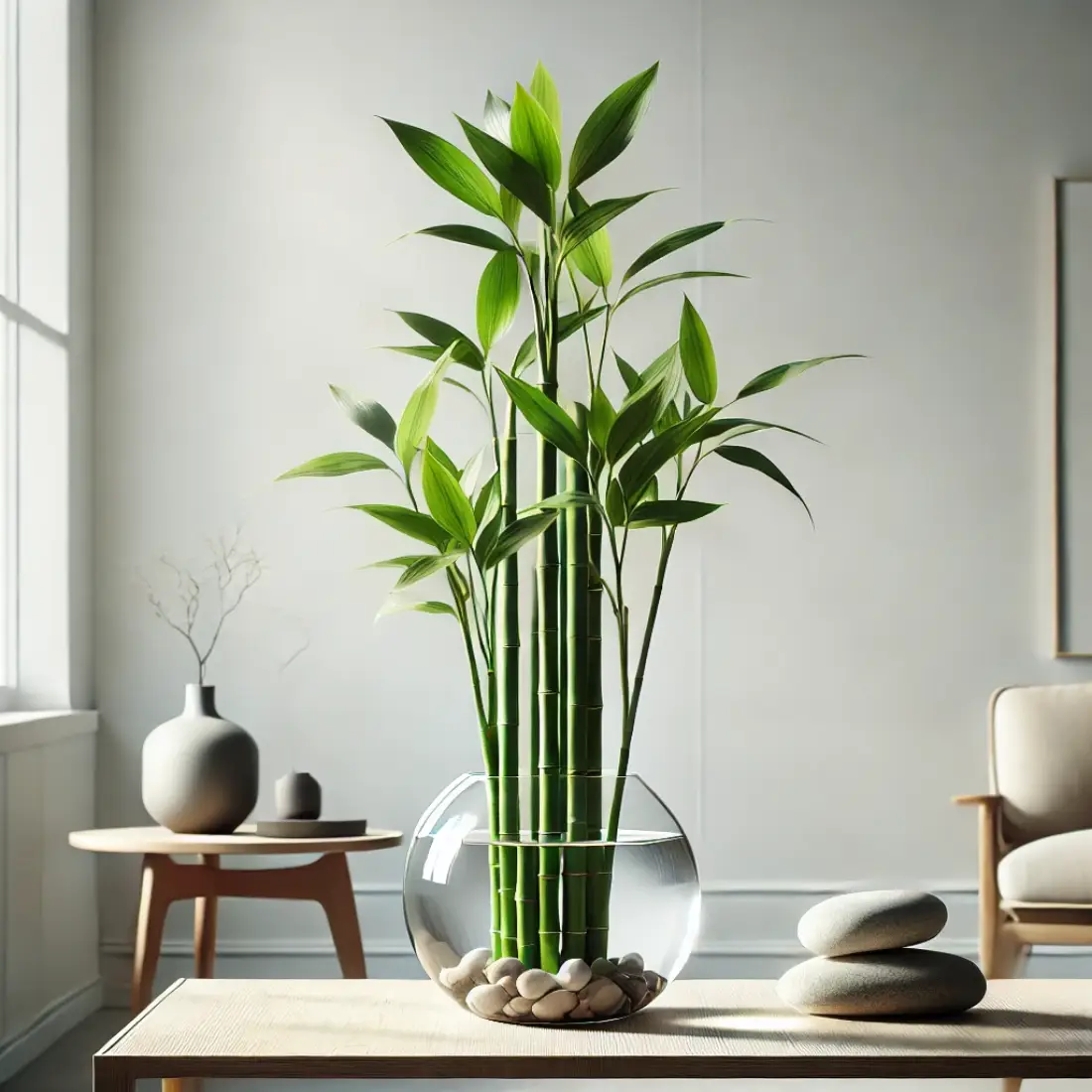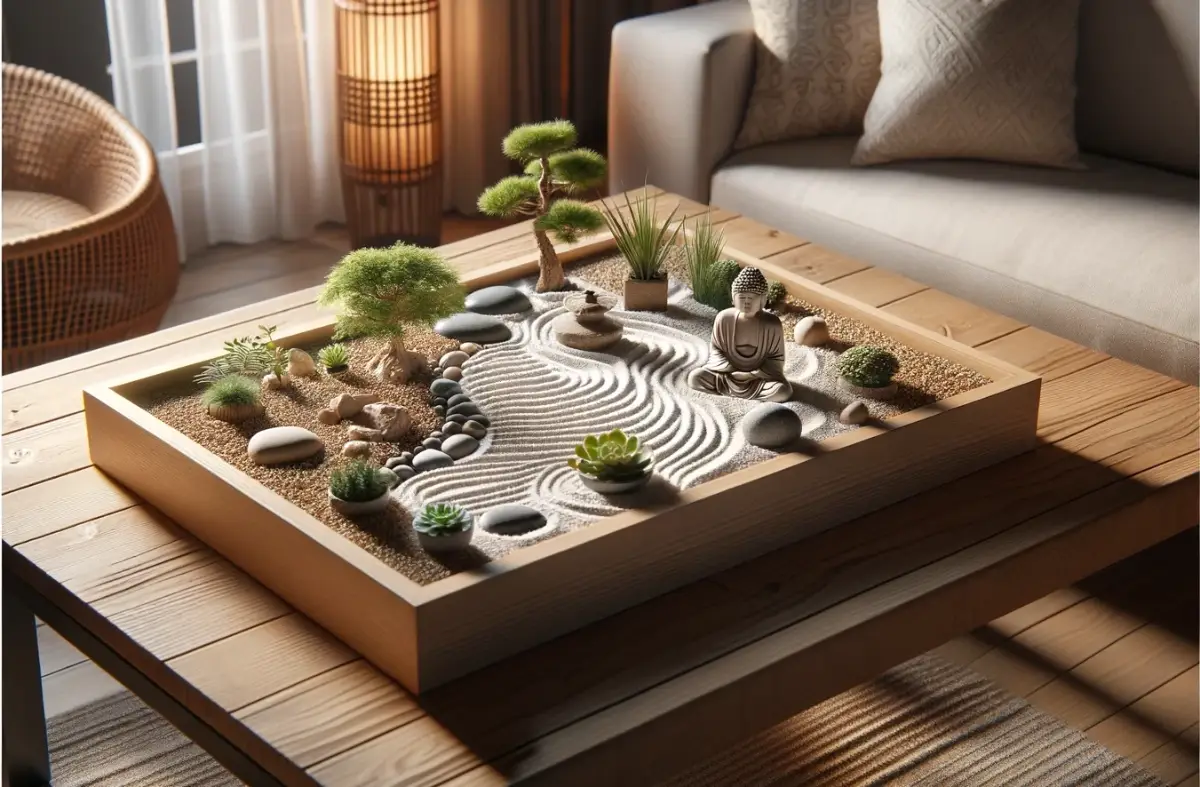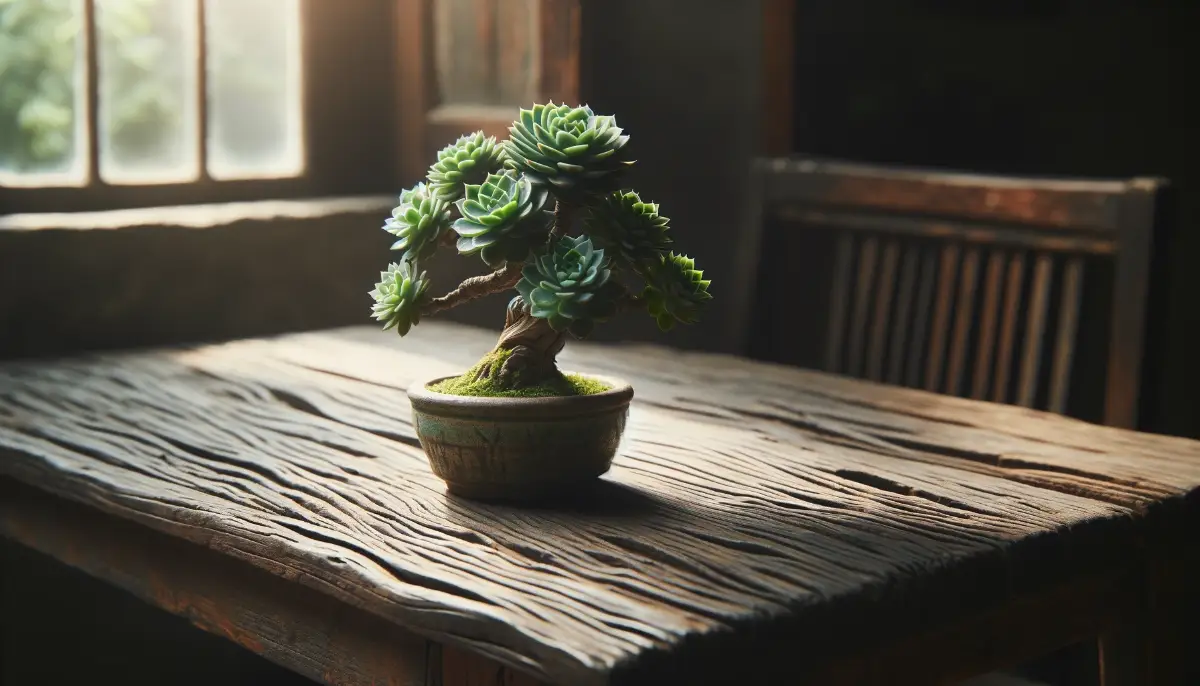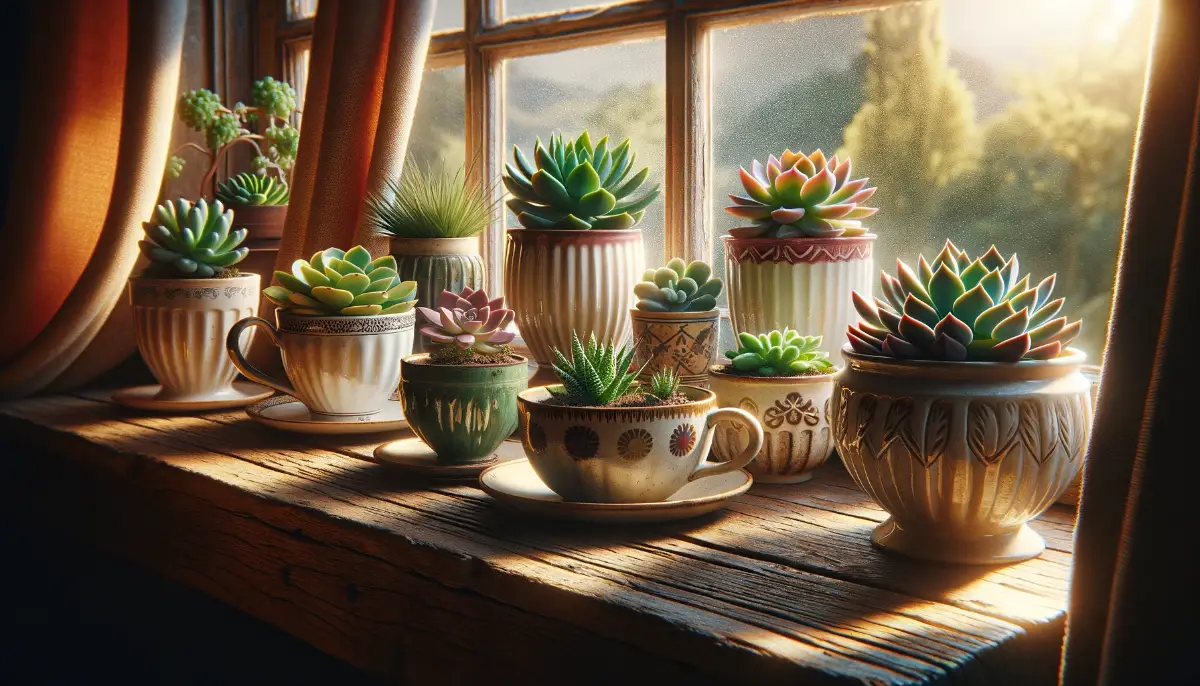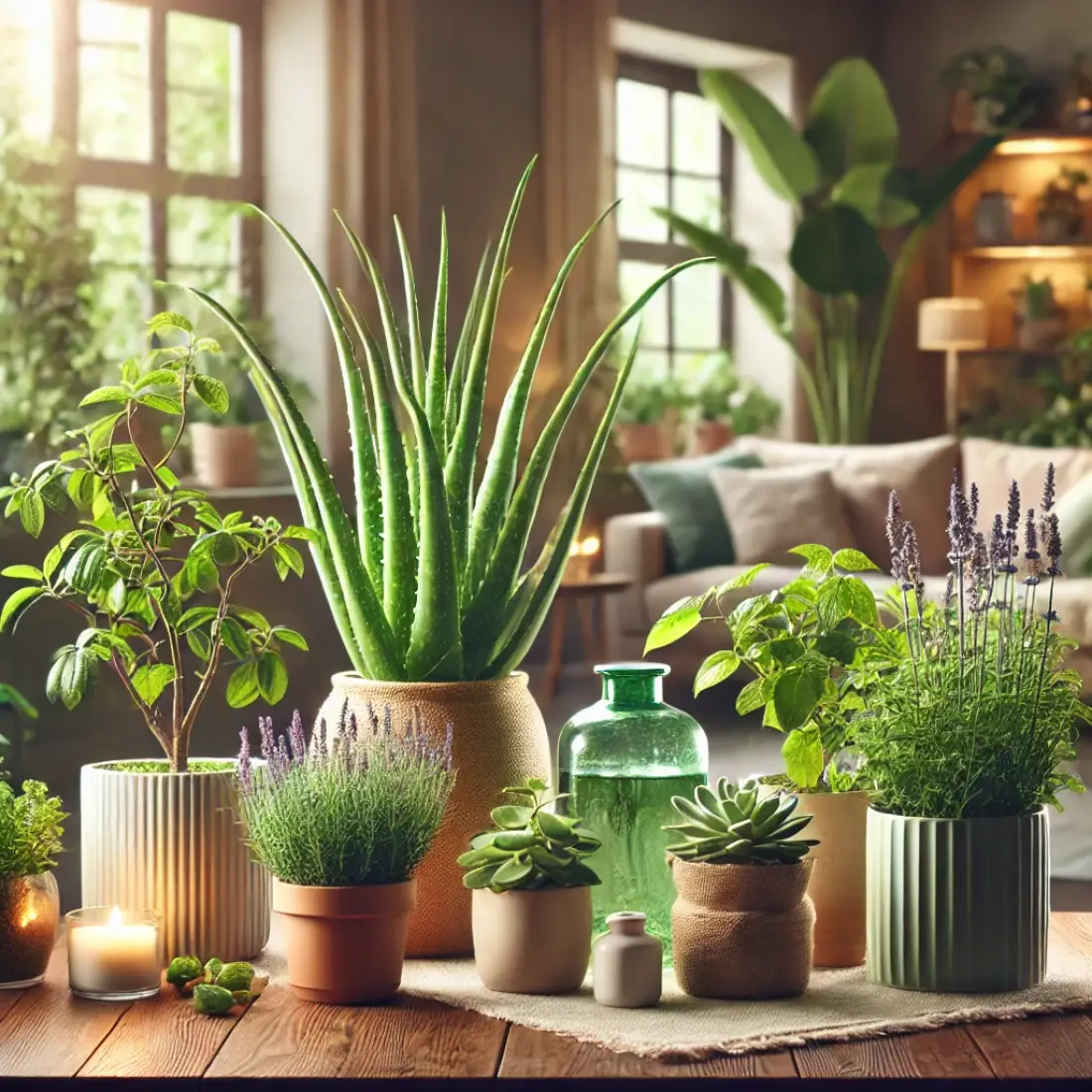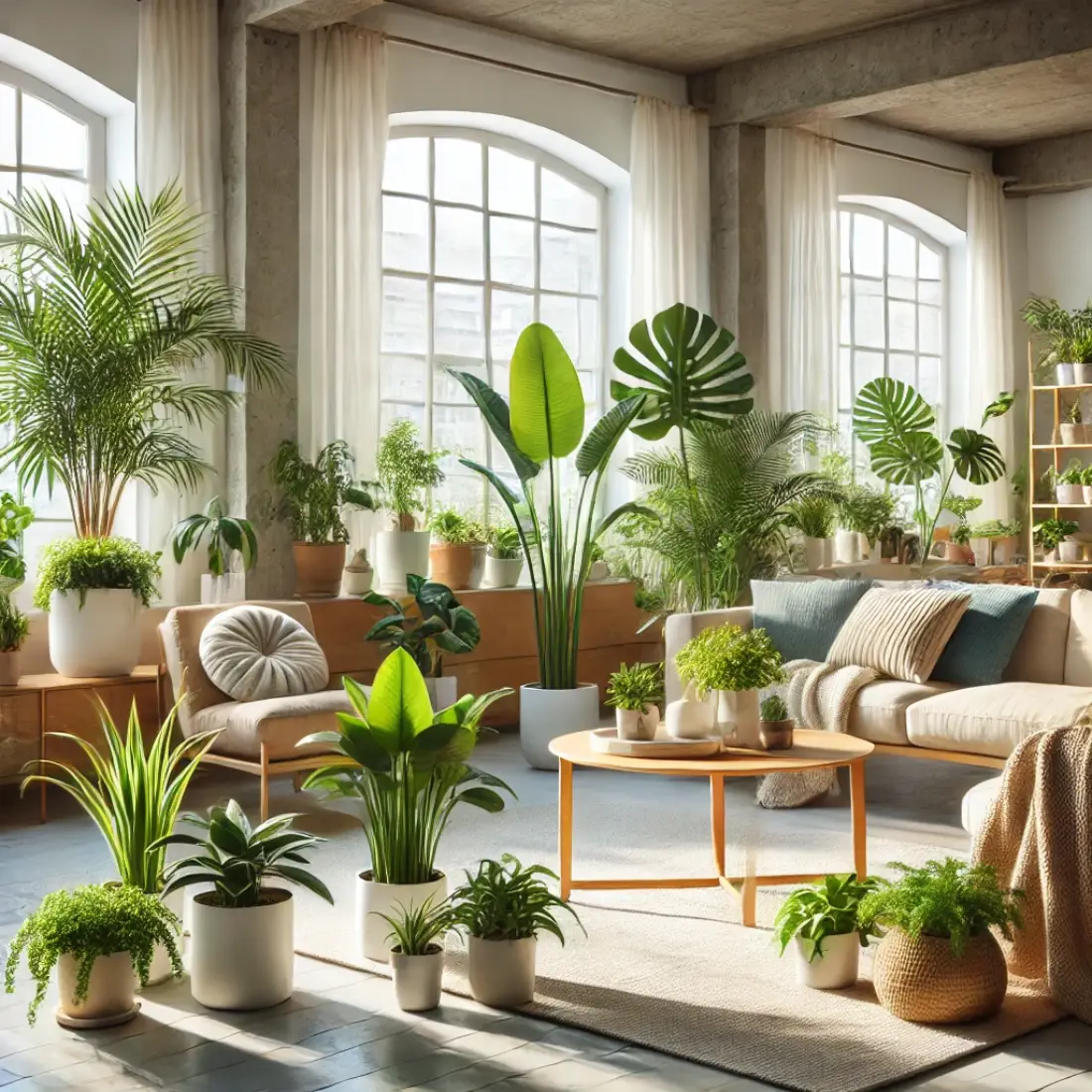Lucky Bamboo (Dracaena Sanderiana) is a popular and versatile houseplant known for its elegant, minimalist appearance and its symbolic significance in Feng Shui. Despite its name, Lucky Bamboo is not a true bamboo but a member of the Dracaena family.
This resilient plant can thrive in a variety of environments and is celebrated for its low maintenance and adaptability. Whether grown in water or soil, providing the right care for Lucky Bamboo can enhance its growth and longevity, making it a perfect addition to any home or office decor.
- Lucky Bamboo is a hardy and low-maintenance plant
- It can be grown in water or soil
- Proper light, water, and temperature are crucial for its growth
- Regular maintenance ensures a healthy and attractive plant
Symbolism and Significance in Feng Shui
Lucky Bamboo holds a special place in Feng Shui due to its ability to attract positive energy and bring good fortune.
Five Elements Balance: Lucky Bamboo represents all five Feng Shui elements. The plant itself symbolizes wood, the rocks or pebbles signify earth, the container represents metal, water is present in the vase, and the red ribbon tied around the stalks denotes fire. This balance is believed to harmonize the energy in the environment.
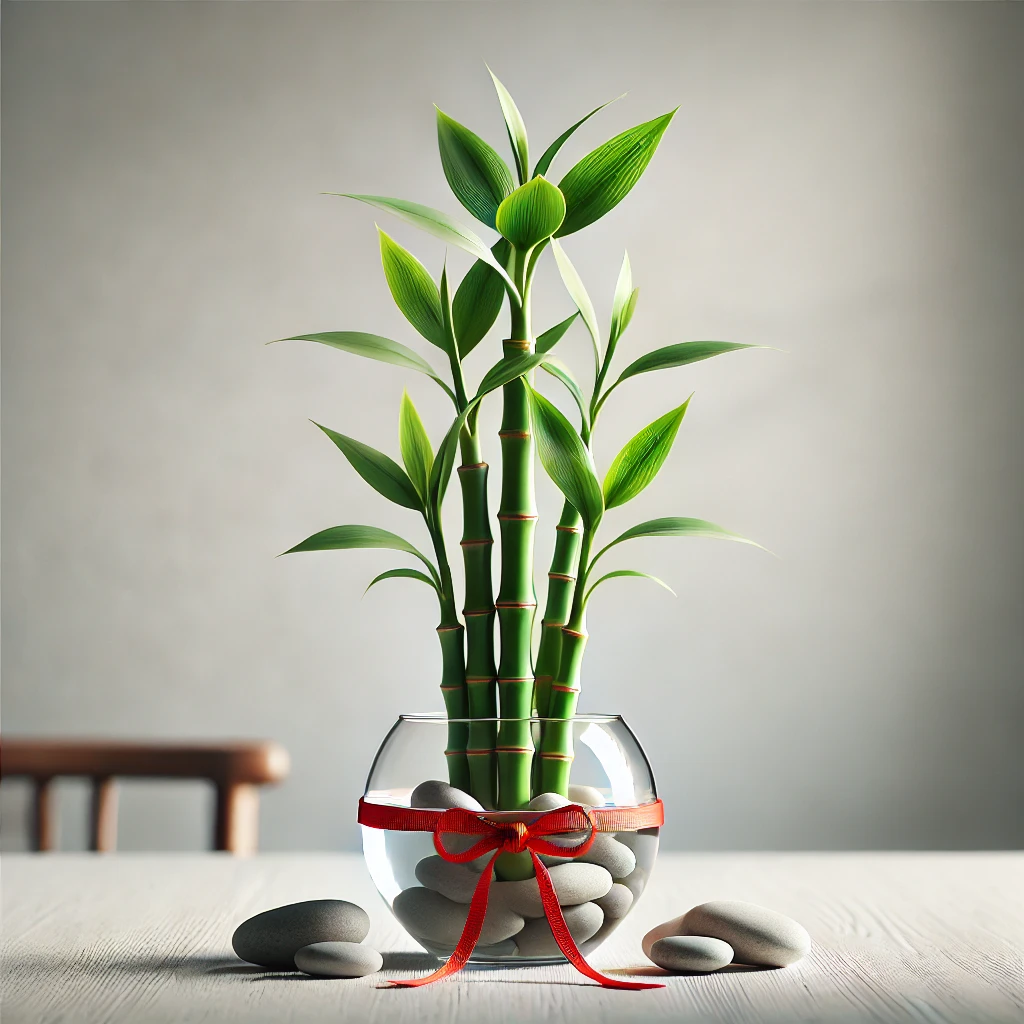
Number of Stalks: The number of stalks in a Lucky Bamboo arrangement carries specific meanings: Two Stalks: Symbolizes love and double luck; Three Stalks: Represents happiness, wealth, and longevity; Five Stalks: Attracts health; Eight Stalks: Brings growth and prosper; Nine Stalks: Associated with great luck.
- Attracting Prosperity: Placing Lucky Bamboo in the wealth corner of your home or office (southeast) can enhance financial success and abundance.
- Promoting Harmony: Positioning Lucky Bamboo in the east can improve health and family harmony.
The integration of Lucky Bamboo into your living space is not only aesthetically pleasing but also a meaningful way to attract positive energies and promote overall well-being.
Types of Lucky Bamboo
Lucky Bamboo comes in various types, each with unique characteristics that can add beauty and positive energy to your space. Here are some popular varieties:
Straight Lucky Bamboo
- Description: Characterized by its upright, straight stalks.
- Appearance: Classic look, often used in minimalist decor.
- Symbolism: Represents resilience and straightforwardness.
Curly Lucky Bamboo
- Description: Known for its spiral or twisted stalks.
- Appearance: Adds an artistic and dynamic touch to any setting.
- Symbolism: Signifies flexibility and creativity.
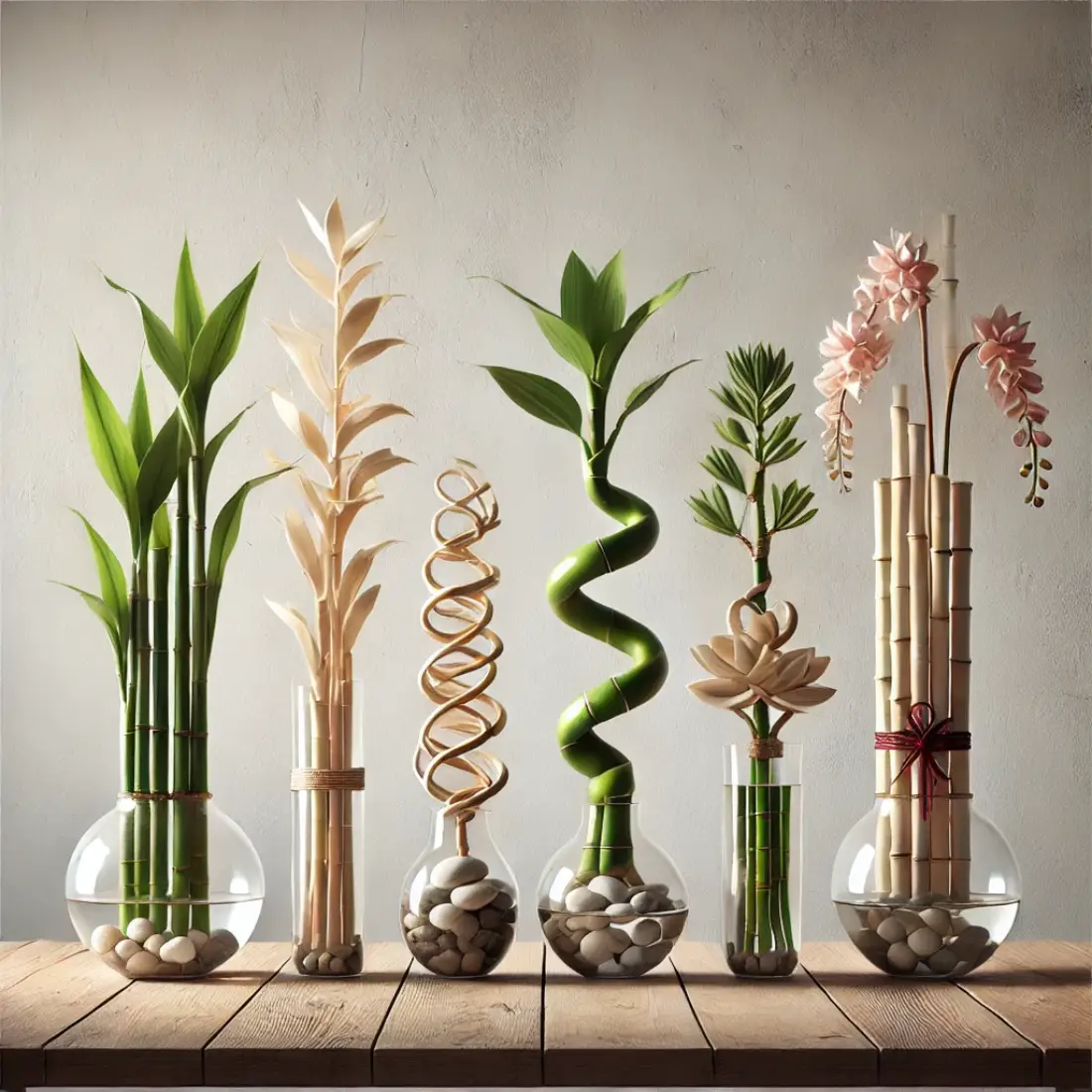
Braided Lucky Bamboo
- Description: Features stalks that are intricately braided together.
- Appearance: Creates a visually appealing and unique structure.
- Symbolism: Represents unity and strength.
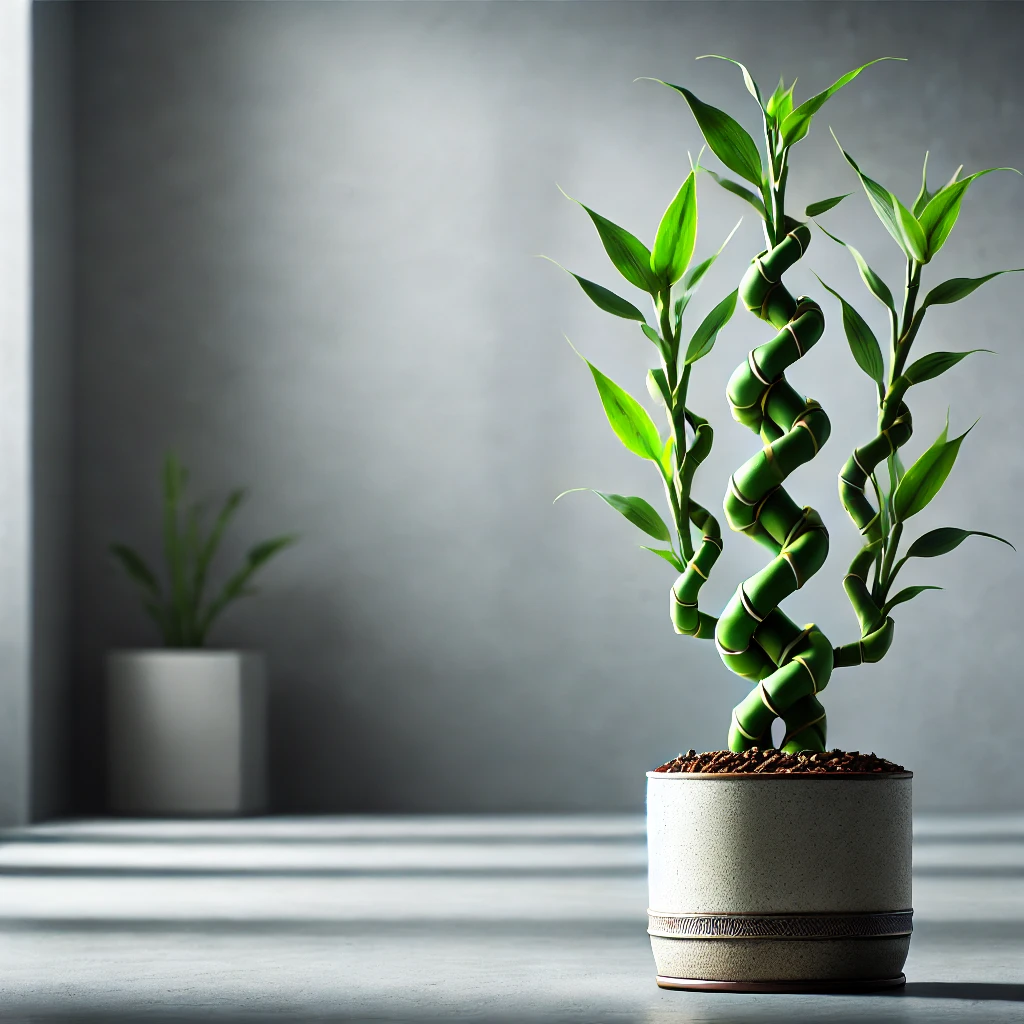
Lotus Lucky Bamboo
- Description: Stalks grow and spread out at the top, resembling a lotus flower.
- Appearance: Elegant and distinctive, often tied with a red ribbon.
- Symbolism: Symbolizes purity and enlightenment.
How to Grow Lucky Bamboo in Water
Growing Lucky Bamboo in water is simple and rewarding. Follow these steps to ensure your plant thrives:
Choosing the Right Container
- Select a glass vase or container that is tall enough to support the stalks.
- Ensure the container is transparent to monitor water levels and root health.
Adding Support
- Place clean pebbles, stones, or marbles at the bottom of the container.
- These will support the stalks and help keep them upright.
Using the Right Water
- Use distilled or purified water to avoid chemicals like chlorine and fluoride, which can harm the plant.
- Fill the container with enough water to cover the roots, about 1-2 inches above the base.
Arranging the Stalks
- Place the Lucky Bamboo stalks in the container, embedding them in the pebbles for stability.
- Arrange them according to your preference, ensuring they stand upright.
Maintaining Water Levels
- Regularly check the water level and top up as needed to keep the roots submerged.
- Change the water every 1-2 weeks to prevent stagnation and provide fresh nutrients.
Ensuring Proper Light
- Position the container in a spot with bright, indirect light.
- Avoid direct sunlight as it can scorch the leaves and damage the plant.
Monitoring Health
- Check for yellowing leaves, which may indicate poor water quality or inadequate light.
- Trim any dead or yellow leaves to keep the plant healthy and attractive.
How to Grow Lucky Bamboo in Soil
Growing Lucky Bamboo in soil can offer more stability and nutrients compared to water. Follow these steps to ensure your Lucky Bamboo thrives in soil:
Selecting the Right Pot and Soil
- Choose a pot with drainage holes to prevent waterlogging and root rot.
- Use a well-draining potting mix, preferably one designed for houseplants. A mixture of potting soil, sand, and perlite is ideal.
Planting the Lucky Bamboo
- Fill the pot halfway with the potting mix.
- Place the Lucky Bamboo stalks in the pot, ensuring the roots are spread out and well-covered.
- Add more soil around the stalks, pressing down gently to secure them. Leave about an inch of space from the top of the pot for watering.
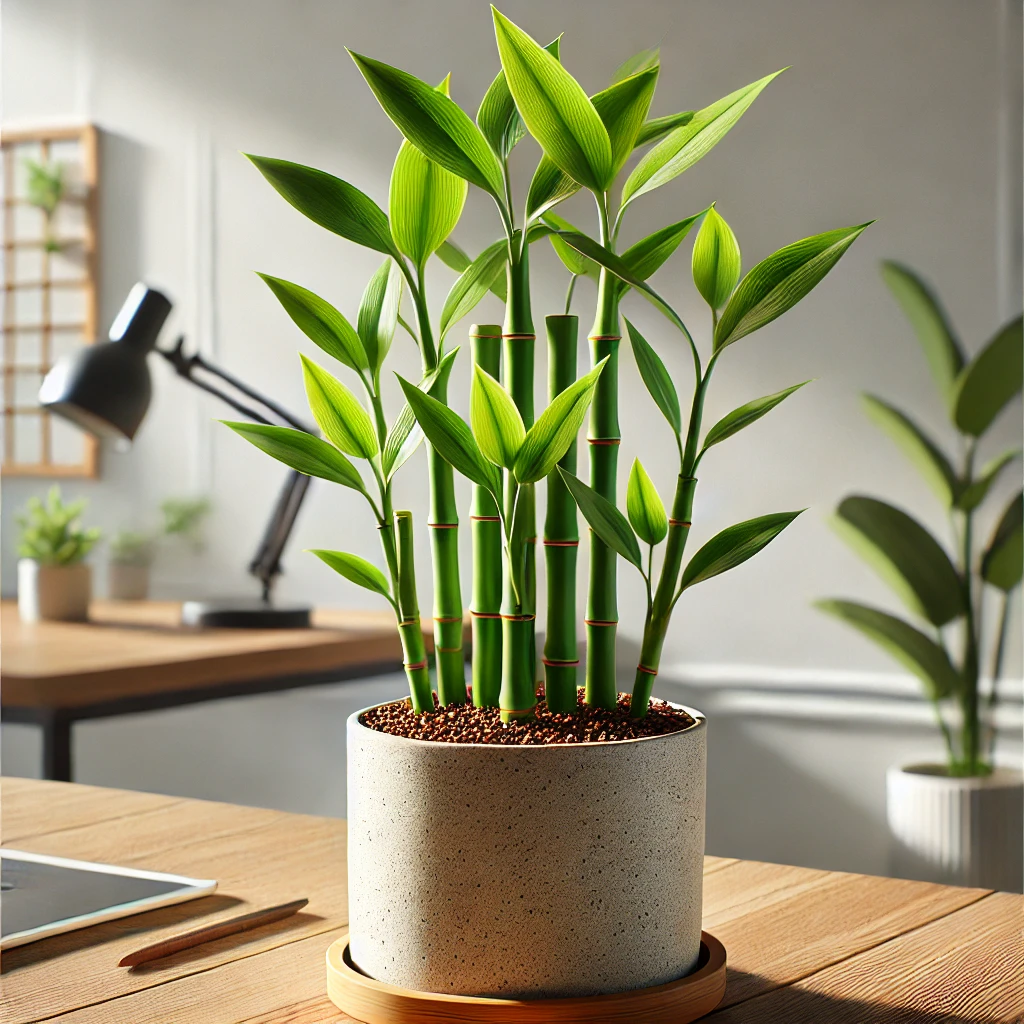
Watering Properly
- Water the plant thoroughly after planting, ensuring the soil is evenly moist.
- Maintain a consistent watering schedule, keeping the soil moist but not waterlogged. Water when the top inch of soil feels dry to the touch.
- Use distilled or purified water to avoid chlorine and fluoride, which can harm the plant.
Providing the Right Light
- Place the pot in a location with bright, indirect light.
- Avoid direct sunlight, which can scorch the leaves, and low light, which can stunt growth.
Maintaining Ideal Temperature and Humidity
- Keep the plant in a temperature range of 65-95°F (18-35°C).
- Maintain moderate to high humidity levels. You can mist the plant occasionally to increase humidity, especially in dry conditions.
Feeding and Fertilizing
- Use a diluted, organic liquid fertilizer once a month during the growing season (spring and summer).
- Avoid over-fertilizing, as too much can cause leaf burn and other issues.
Pruning and Care
- Regularly trim any yellow or dead leaves to keep the plant healthy and attractive.
- Occasionally rotate the pot to ensure even light distribution and balanced growth.
Repotting Lucky Bamboo
Repotting Lucky Bamboo is essential for its health and growth, especially if it has outgrown its current container or if the soil has become depleted of nutrients. Follow these steps to successfully repot your Lucky Bamboo:
When to Repot
- Signs of Repotting Need: Roots are outgrowing the container, water drains too quickly or too slowly, or the plant looks unhealthy despite proper care.
- Best Time: Spring or early summer, during the growing season.
Choosing the Right Pot and Soil
- Pot Selection: Choose a new pot that is 1-2 inches larger in diameter than the current pot. Ensure it has drainage holes.
- Soil Mix: Use a well-draining potting mix suitable for houseplants. A blend of potting soil, sand, and perlite is ideal for Lucky Bamboo.
Preparing the Plant
- Water the Plant: Water the Lucky Bamboo a day before repotting to make it easier to remove from its current pot.
- Remove from Old Pot: Gently remove the plant from its current container, being careful not to damage the roots. You might need to tap the pot or use a knife to loosen the soil around the edges.
Trimming the Roots
- Check the Roots: Inspect the roots for any signs of rot or damage. Healthy roots should be white and firm.
- Prune if Necessary: Trim away any brown or mushy roots with sterilized scissors to prevent the spread of disease.
Planting in the New Pot
- Add Soil: Fill the new pot halfway with the potting mix.
- Position the Plant: Place the Lucky Bamboo in the center of the pot, spreading the roots out evenly.
- Fill and Firm: Add more soil around the plant, gently pressing down to eliminate air pockets. Leave about an inch of space from the top of the pot for watering.
Watering and Care
- Initial Watering: Water the plant thoroughly after repotting to help settle the soil and roots.
- Ongoing Care: Keep the soil consistently moist but not waterlogged. Water when the top inch of soil feels dry.
- Light and Location: Place the repotted plant in a spot with bright, indirect light. Avoid direct sunlight to prevent leaf scorch.
Monitoring Post-Repotting
- Watch for Stress Signs: Monitor the plant for signs of transplant shock, such as yellowing leaves or drooping. Ensure proper light, temperature, and humidity to help the plant adjust.
- Adjust Care as Needed: Continue with regular care routines, including appropriate watering, feeding, and pruning.
Propagation of Lucky Bamboo
Propagating Lucky Bamboo is a simple and rewarding process that allows you to grow new plants from existing ones.
Selecting the Right Stalk
- Healthy Plant: Choose a healthy, mature Lucky Bamboo plant with strong, green stalks.
- Node Selection: Identify a section with at least one node (a raised, ring-like area on the stalk where roots and shoots grow).
Cutting the Stalk
- Clean Tools: Use a sterilized, sharp knife or scissors to make a clean cut.
- Cutting Length: Cut a section of the stalk that is about 4-6 inches long, ensuring it has at least one node.
Preparing the Cutting
- Leaf Removal: Remove the leaves from the lower part of the cutting, leaving a few at the top.
- Optional Step: Dip the cut end in rooting hormone to encourage root growth, though this is not necessary.
Rooting in Water
- Water Container: Place the cutting in a glass of distilled or purified water, ensuring the node is submerged.
- Water Quality: Keep the water clean by changing it every 1-2 weeks.
- Light Conditions: Place the container in bright, indirect light. Avoid direct sunlight.
Rooting in Soil
- Soil Preparation: Alternatively, you can plant the cutting directly into a pot with well-draining potting mix.
- Moisture: Keep the soil moist but not waterlogged. Water when the top inch of soil feels dry.
- Light Conditions: Ensure the plant gets bright, indirect light.
Monitoring Growth
- Root Development: Within a few weeks, you should see roots developing from the node.
- Shoot Growth: New shoots and leaves will begin to emerge from the top of the cutting.
Transplanting
- New Pot or Location: Once the roots are well-established, you can transplant the new plant into a larger pot or keep it in its current container.
- Soil and Water: If growing in soil, use a well-draining mix and maintain consistent moisture. If growing in water, keep the roots submerged and change the water regularly.
Care for New Plants
- Regular Maintenance: Continue regular care routines, including proper lighting, watering, and occasional feeding with a diluted liquid fertilizer.
- Observation: Monitor the new plants for signs of stress or disease and adjust care as needed.
Pruning and Shaping Lucky Bamboo
Proper pruning and shaping of Lucky Bamboo not only keeps the plant healthy but also allows you to create visually appealing designs. Here’s a guide to help you prune and shape your Lucky Bamboo:
Why Prune Lucky Bamboo?
- Health Maintenance: Remove dead or yellowing leaves to promote overall plant health.
- Control Size: Prevents the plant from becoming too tall or leggy.
- Aesthetic Appeal: Maintain desired shapes and forms.
Tools Needed
- Sharp Scissors or Pruning Shears: Ensure they are clean and sterilized to prevent disease.
- Clean Cloth: To wipe the tools and plant stems.
How to Prune Lucky Bamboo
- Identify Unwanted Growth: Look for yellow, brown, or dead leaves and any excessively long or unbalanced stalks.
- Cutting Leaves: Trim leaves that are discolored or damaged, cutting close to the stalk.
- Trimming Stalks: If a stalk is too tall, cut just above a node (a ring-like segment on the stalk). This encourages new growth from the cut point.
- Removing Offshoots: If offshoots are too numerous or unbalanced, trim them close to the main stalk.
Shaping Techniques
- Guiding Growth: Use plant ties, twist ties, or small stakes to guide the direction of growth for new shoots.
- Spiral and Curved Shapes: Create spirals or curves by placing the plant on its side in indirect light and rotating it regularly. The plant will grow toward the light, allowing you to control its shape gradually.
Training for Specific Shapes
- Braiding: If you have multiple stalks, you can braid them together. This is easiest when the stalks are young and flexible. Secure the braids loosely with plant ties.
- Twisting: For a twisted appearance, rotate the plant weekly to change the direction of light exposure, encouraging the stalks to grow in a spiral.
Caring for Pruned and Shaped Plants
- Healing Time: After pruning, allow the plant some time to heal. The cut areas may dry out and seal over naturally.
- Consistent Care: Ensure the plant receives adequate light, water, and nutrients to support new growth.
- Avoid Over-Pruning: Pruning too much at once can stress the plant. Aim to prune no more than one-third of the plant at a time.
Common Mistakes to Avoid
- Dull Tools: Using dull scissors can crush the stalks rather than cut cleanly, leading to potential damage.
- Over-Pruning: Removing too much foliage or too many stalks at once can shock the plant.
- Improper Light: Placing the plant in direct sunlight after pruning can stress it. Stick to bright, indirect light.
Troubleshooting Common Issues with Lucky Bamboo
Maintaining the health of your Lucky Bamboo involves recognizing and addressing common issues that may arise. Here’s how to troubleshoot some typical problems:
Yellowing Leaves
Yellowing leaves are often caused by overwatering or poor water quality due to chlorine and fluoride. Excessive direct sunlight and nutrient deficiency can also lead to yellowing. To fix this, use distilled or purified water and change it every 1-2 weeks. Ensure the plant receives bright, indirect light, and consider using a diluted, balanced liquid fertilizer monthly during the growing season.
Brown Leaf Tips
Brown tips on leaves can result from low humidity, high levels of fluoride or chlorine in the water, or over-fertilization. To address this, increase humidity by misting the plant or placing it near a humidifier. Switch to distilled or purified water, and reduce the frequency or concentration of fertilizer.
Drooping or Wilting Stalks
Drooping or wilting stalks may be caused by underwatering or inconsistent watering, or root rot from overwatering or poor drainage. Maintain consistent watering, keeping the soil moist but not waterlogged. Ensure proper drainage if grown in soil, and if in water, change the water regularly.
Root Rot
Root rot is typically due to stagnant water or waterlogged soil, and lack of proper drainage. For water-grown plants, change the water frequently and use clean, fresh water. For soil-grown plants, use well-draining soil and a pot with drainage holes. Repot the plant if the soil is waterlogged.
Stunted Growth
Stunted growth can be due to inadequate light, poor water quality, or nutrient deficiency. Move the plant to a location with brighter, indirect light. Use distilled or purified water, and apply a balanced, diluted liquid fertilizer during the growing season.
Pests
Common pests affecting Lucky Bamboo include spider mites, mealybugs, and aphids. Inspect the plant regularly for pests. Wipe leaves with a damp cloth or use insecticidal soap to remove pests. Isolate the affected plant to prevent the spread to other plants.
Algae Growth in Water
Algae growth in the water is caused by exposure to direct sunlight and infrequent water changes. Keep the plant in indirect light and change the water every 1-2 weeks, cleaning the container regularly.
FAQs about Lucky Bamboo
How often should I change the water for my Lucky Bamboo?
Change the water every 1-2 weeks to prevent stagnation and ensure the plant has access to fresh nutrients. Use distilled or purified water to avoid harmful chemicals like chlorine and fluoride.
Can Lucky Bamboo grow in soil, and how should I care for it?
Yes, Lucky Bamboo can grow in soil. Use a well-draining potting mix, water the plant regularly to keep the soil moist but not waterlogged, and ensure it receives bright, indirect light.
What should I do if the leaves of my Lucky Bamboo turn yellow?
Yellowing leaves can be a sign of overwatering, poor water quality, or too much direct sunlight. Use distilled or purified water, ensure the plant gets bright, indirect light, and reduce watering if the soil is consistently wet.
How can I make my Lucky Bamboo grow taller?
To encourage taller growth, provide bright, indirect light and ensure regular watering with distilled or purified water. You can also use a diluted, balanced liquid fertilizer monthly during the growing season.
Is Lucky Bamboo safe for pets?
Lucky Bamboo is toxic to pets if ingested. Keep the plant out of reach of cats, dogs, and other pets to prevent accidental consumption.
What should I do if my Lucky Bamboo develops root rot?
If your plant develops root rot, remove it from the water or soil, trim away the affected roots with sterilized scissors, and place it in fresh distilled or purified water or well-draining soil. Ensure proper drainage and avoid overwatering.
How do I shape my Lucky Bamboo into spirals or other forms?
To shape Lucky Bamboo, place the plant on its side in indirect light and rotate it regularly. The plant will grow towards the light, allowing you to guide its shape. You can also use plant ties or small stakes to help train the stalks.
Why are the tips of my Lucky Bamboo turning brown?
Brown tips can result from low humidity, high levels of fluoride or chlorine in the water, or over-fertilization. Increase humidity by misting the plant, use distilled or purified water, and reduce the frequency or concentration of fertilizer.
Can I propagate Lucky Bamboo, and how do I do it?
Yes, you can propagate Lucky Bamboo. Cut a healthy section of stalk with at least one node, place it in distilled or purified water, and ensure the node is submerged. Keep the cutting in bright, indirect light and change the water every 1-2 weeks.
How do I prevent algae growth in my Lucky Bamboo’s water?
To prevent algae growth, keep the plant in indirect light and change the water every 1-2 weeks. Clean the container regularly to remove any algae buildup.

